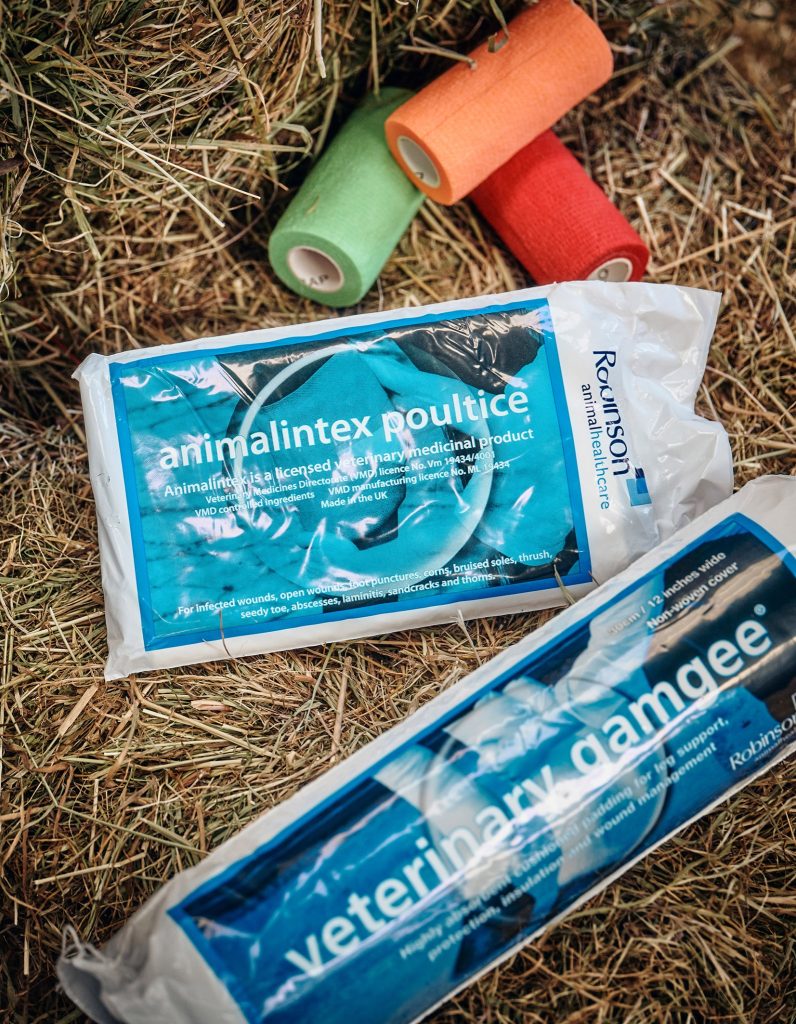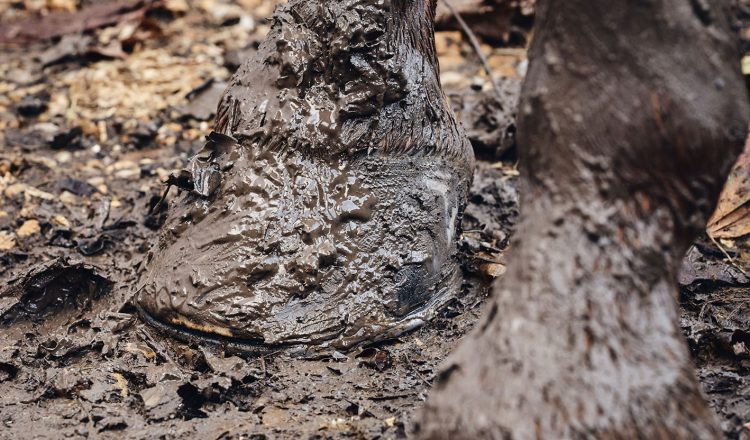Commonly seen during winter, mud fever is a bacterial skin infection that can affect your horse’s skin on the heel, fetlock and pastern. It can affect all horses, but particularly those with long hair around the fetlocks and white limbs.
Causes
Mud fever is caused by chronic wetting of the skin on the lower legs which can be from either exposure to wet and muddy conditions or from frequent washing. This weakens the skins normal defence therefore allowing infection to penetrate the skin. Some horses also appear more predisposed to the condition and some soil types also seem to contribute to the onset of mud fever.

Signs
Identifying mud fever is important to be able to commence with an effective treatment plan. Matted areas of hair covering crusty scabs can often be the first sign which leave moist lesions when the scabs are removed. In more severe cases it can lead to inflammation and infection which can then spread up the legs causing swelling, pain and sometimes lameness.

Treatment
The bacterium that causes mud fever lives under the scabs and is anaerobic so exposing it to oxygen helps, this means it is important to remove the scabs. Wash any affected scabby areas using a cleansing wash that has antibacterial properties, remembering to dry the legs thoroughly, ideally using Veterinary Gamgee® as this will absorb any excess moisture and provide warmth and insulation.
In severe cases a hot poultice such as Animalintex® can be used to remove infection and aid healing. If the limb is swollen, painful and lameness is present, always contact your vet.

Prevention
The best way to prevent mud fever is to try and maintain healthy skin by keeping your horse in dry conditions wherever possible. Try to avoid the temptation to wash off mud every time you bring your horse in from the field, instead allow the mud to dry and then brush off. Well-fitting waterproof, breathable turnout boots can help prevent mud coming into contact with the horse’s skin.
Robinson Animal Healthcare has a wide range of products for all your first aid requirements including the market-leading Animalintex® which is the only VMD licensed multi-layered absorbent poultice available in the UK.
For more information contact Robinson Animal Healthcare on 01909 735000 or visit www.robinsonhealthcare.com














